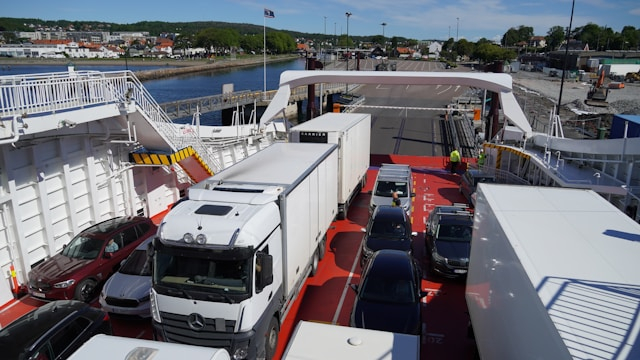Why Real-Time Delivery Updates Matter
The modern customer expectation
Customers now expect near-instant visibility on their deliveries. Whether you run last-mile courier services or a B2B distribution fleet, callers and clients want accurate ETAs, clear windows and reassurance when things change. If you can provide up-to-the-minute status you reduce frustration, cut inbound calls and present a professional face for your operation.
Operational pressures on fleet managers
As a fleet manager you juggle driver availability, traffic, customer windows and changing priorities. Late arrivals cost more than time; they damage reputation and increase churn. Real-time updates help you spot delays early, replan routes and keep stakeholders informed. That means fewer manual escalations and more predictable days.
How fleet software fills the gap
Modern fleet platforms combine GPS, telematics and communications to give a single view of progress. From live location feeds to automated SMS alerts, the right system removes guesswork. Integrations with your TMS and CRM mean the customer journey is coherent, and everyone — from operations to customer service — works off the same data.
Core Benefits for Fleet Managers
Improved on-time performance and routing efficiency
Real-time location data and dynamic ETAs let you react to congestion, breakdowns or unexpected stops. You can reassign tasks to the nearest vehicle or adjust delivery sequences to protect service windows. Over time, these small adjustments add up to better schedule adherence and more efficient mileage use.
Enhanced customer satisfaction and reduced inquiries
Automated notifications mean customers get status updates without speaking to your team. Fewer inbound calls free up staff and reduce stress on drivers. Providing proof of delivery such as signed receipts or timestamped photos also closes disputes quickly and improves NPS scores.
Lower operational costs and better resource utilisation
With visibility, you can reduce unnecessary mileage, avoid double-handling and optimise driver shifts. That translates into savings on fuel, repairs and overtime. Accurate ETAs and reduced idle time also improve vehicle utilisation, letting you do more with the same fleet.
Key Features to Look For in Fleet Software
Live GPS tracking and geofencing
Choose software with precise tracking and reliable geofencing so you can create virtual delivery zones and trigger on-entry alerts. Good ETA modelling uses historical speed profiles and live traffic to provide a realistic arrival time rather than a guess. Geofences also automate proof-of-arrival workflows and speed up customer notifications.
Automated customer notifications and portals
Look for flexible notification templates that send SMS, email or in-app messages at configurable milestones. A simple self-service tracking page reassures customers and cuts calls. Customisable delivery windows and instructions reduce failed attempts and give drivers the context they need.
Proof of delivery and telematics integration
Proof of delivery capabilities should include signatures, photos, barcode scanning and timestamped records. Integrating telematics data such as engine hours, fuel consumption and driver behaviour gives richer insights into delay causes and helps refine ETA calculations. Consider pairing this with other safety tools like Dash Cameras for incident verification.
Implementation Best Practices
Data integration and system compatibility
Successful rollouts start with integration. Connect your TMS, CRM and telematics into a single source of truth so ETAs and delivery statuses update consistently across systems. Clean, structured data means your platform can generate reliable ETAs and automated alerts that match contractual SLAs.
Driver workflow and training
Keep the driver app interface simple and workflows minimal. Drivers should be able to confirm arrivals, capture proof and add short notes in a few taps. Provide short, focused training sessions and involve drivers early; their buy-in is key to accurate recorded data and consistent use of the system.
Communication templates and SLA alignment
Design notification templates that reflect your brand voice and SLA commitments. Standardise timing for pre-arrival, arrival and exception messages so customers know what to expect. Align internal alerts to match the escalation paths you maintain for high-value clients.
Ready to see how real-time delivery updates can transform your operation? Book a demo with Traknova and we’ll walk you through the dashboard, ETA modelling and customer notification flows tailored to your fleet.
Measuring Success and Overcoming Common Challenges
KPIs and reporting
Track on-time delivery percentage, ETA accuracy, average delivery time and number of customer enquiries. Monitor cost per delivery and vehicle utilisation so you can quantify the ROI of real-time updates. Dashboards that visualise trends help you spot issues before they become systemic.
Dealing with connectivity and data quality issues
Connectivity gaps are inevitable. Choose solutions that cache events while offline and upload data when a connection is restored. Use GPS smoothing and validation to reduce drift and false stops. Regular data hygiene — removing duplicate IDs and validating timestamps — keeps your reports trustworthy.
Scaling and continuous improvement
Roll out in phases: pilot a subset of vehicles, refine templates and ETA parameters, then scale. Solicit feedback from drivers and customer-service teams and iterate on workflows. Small, continuous improvements to your ETA models and routing rules keep the system tuned to real-world conditions.
Make Real-Time Updates Your Competitive Edge
Real-time delivery updates are no longer a nice-to-have. They are a competitive requirement that improves customer experience, reduces cost and gives you better operational control. By selecting the right features, integrating systems and engaging drivers, you can turn live visibility into measurable performance gains.
Want to explore a tailored solution? Book a demo with Traknova and see the platform in action. Our team will help you map the rollout to your busiest routes and highest-value customers.
Frequently Asked Questions
How accurate are ETAs from fleet software?
Accuracy depends on the quality of location data, traffic inputs and historical route profiles. Modern systems that fuse telematics and live traffic can deliver ETAs within a few minutes on average. Continuous learning and tuning improve accuracy over time.
Will drivers use the system consistently?
Adoption rises when the app is simple, workflows add clear value and drivers see the benefits — fewer calls, simpler proof-of-delivery and reduced waiting times. Involve drivers early and keep training short and practical.
How do I handle customers without smartphones?
Use SMS and automated voice notifications as alternatives. A minimal tracking page that uses a simple reference number means anyone can check status without installing an app.
Can real-time updates integrate with our existing systems?
Yes. Most platforms offer APIs and prebuilt connectors for common TMS, CRM and telematics providers. A phased integration approach keeps disruption to a minimum.
We’d love your feedback. Did this article help you identify where real-time delivery updates could save time or cost in your fleet? Share your thoughts below and please share this post on LinkedIn or Twitter if you found it useful. What is the single biggest challenge you face with delivery ETAs today?
Next step: If you want a personalised walkthrough, book a demo with Traknova or contact us for a consultation. Want more reading? Check our post on Boost Delivery ETA Accuracy with Fleet Tech for deeper technical tips.










